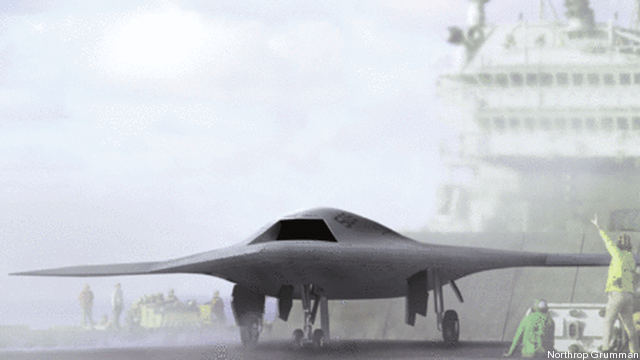UCAS-D Surrogate Makes Carrier Landings, Launches
Posted on
For the first time, the Navy and Northrop Grumman have demonstrated the ability to make an unmanned aircraft make carrier landings and take-offs today, using an F-18 rigged to fly the same way.
It is part of the Navy’s effort to develop a stealthy and unmanned aircraft –UCAS-D, also known as the X-47B — able to fly from carriers and provide intelligence, surveillance and reconnaissance, as well as strike capabilities.
The crucial part of the test involved the F-18 making “several successful launches and recoveries” using the UCAS-D navigation control software from the USS Eisenhower.
The program manager, Capt. Jaime Engdahl, called the event “a significant and critical step toward landing the X-47B on the carrier deck in 2013.”
Janis Pamiljans, Northrop’s vice president for the program, said the results “could be applied, in theory, to any manned or unmanned carrier-compatible aircraft, which could have a dramatic effect on the tempo and efficiency of future carrier operations.”
There was a pilot in the loop for safety during the tests.
“Using a manned surrogate platform to test the unmanned systems avionics and software gives us an extra layer of safety as we test the X-47B software to ensure that it responds correctly and safely to different flight conditions,” explained Glenn Colby, who leads the Navy’s integration of planes and ships for programs.
Perhaps the most interesting long-term capability for the X-47B will be the ability for it be controlled in flight by F-35 pilots. While no one in the military is placing bets yet on when this might be possible, it is a crucial long-term goal of senior Navy, Marine and Air Force officials. 
Subscribe to our newsletter
Promotions, new products and sales. Directly to your inbox.
